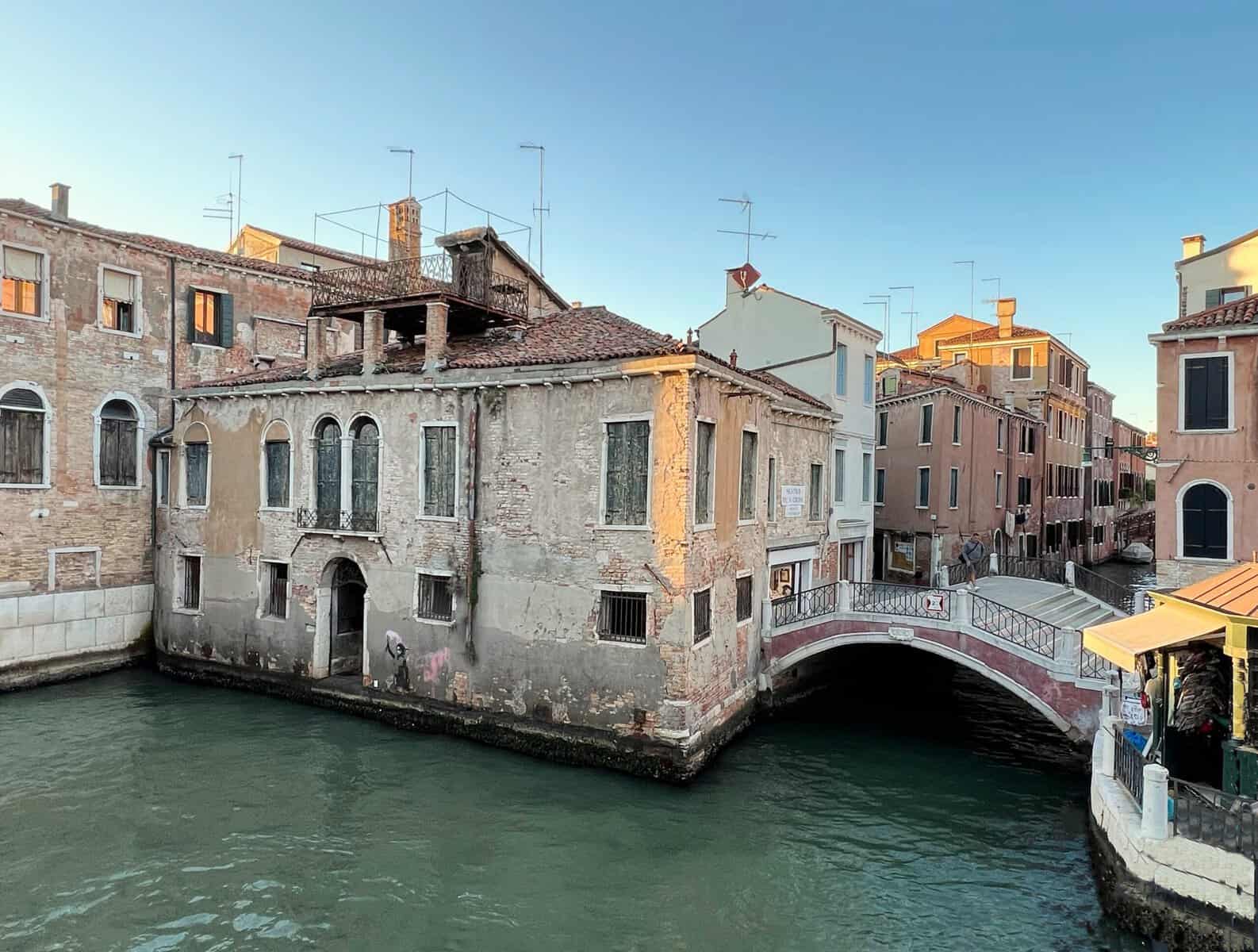Less Crowded Places in Venice
The city in the lagoon was one of the world’s first tourist destinations, and in the last several decades it’s become a notorious example of over-tourism. With such limited space, you might think escaping the crowds would be impossible. But Venice retains a surprising number of quiet corners. Away from swarming San Marco and the Rialto, it’s possible to experience the city on a new level. Locals still gather in squares at sunset to kick balls with their kids or sprawl in lingering patches of sun.
Ironically many tourists squeeze onto boats bound for islands like Burano in the belief that their remote location will provide breathing room. Meanwhile, landmark churches and palazzos in the historic center remain all but empty. Based on our recent visits, here are some areas which keep the serenity in La Serenissima. All sites are marked on our Google map.
Castello
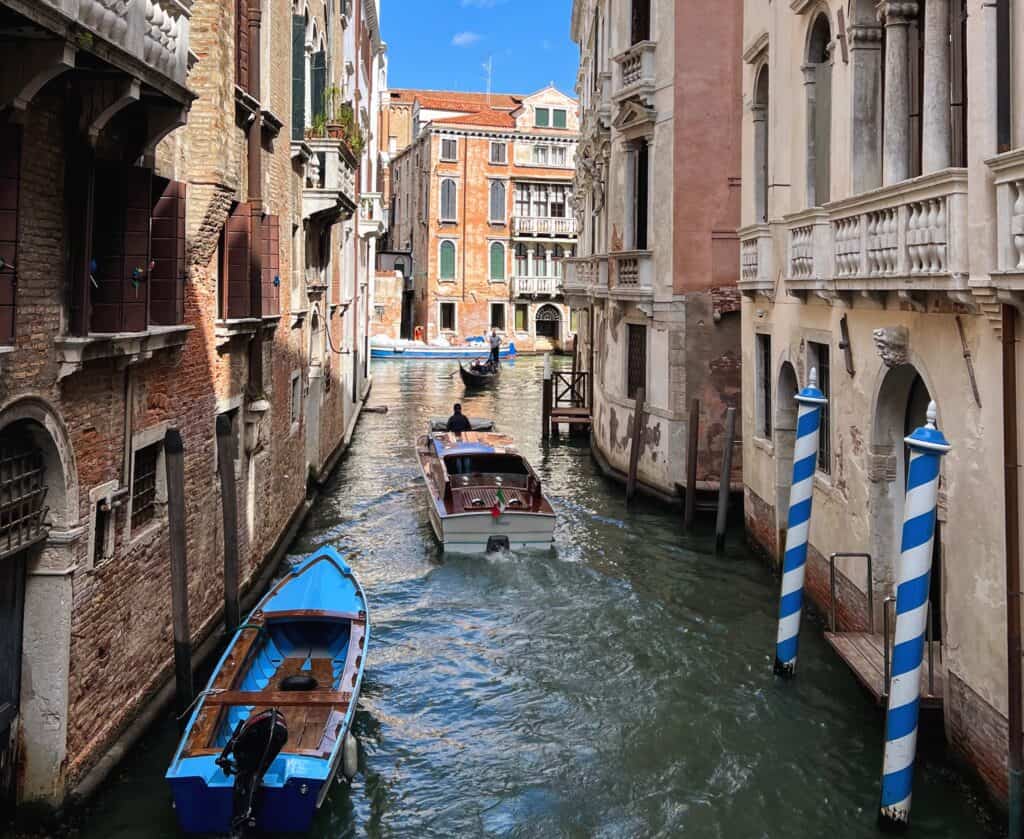
Because of its large size and relative remoteness, Castello gets less tourist traffic. Most of the historic sites cluster closer to San Marco, with the neighborhood becoming quieter and more residential further out. Castello’s eastern end contains a mixture of residential areas, along with Napoleon’s public gardens. Pavilions transform much of the area during the Biennale exhibitions. Via Garibaldi runs from the waterfront promenade to the island of San Pietro di Castello. Both the latter and the larger island of Sant’Elena connect to the rest of Castello with footbridges.


On the left, San Francesco della Vigna
On the less-travelled northern edge of Castello lies the former monastery of San Francesco della Vigna. The outsized scale of Andrea Palladio’s 1568 façade is a surprise on such a compressed site. His groundbreaking design used different scales to distinguish their layers and similar shapes to unite them. Besides work by Veronese and Tiepolo, the church also features a peaceful set of cloisters – something of a rarity in densely-built Venice. In recent years, the church’s vineyard has resumed wine production, selling bottles under the label Harmonia Mundi.

Closer to the city center, we highly recommend the Palazzo Grimani with its inventive take on classical Roman architecture. The Querini Stampalia Palace is another uncrowded museum which showcases works by Bellini, Tintoretto, Tiepolo, and Canaletto. A handful of modern architects such as Carlo Scarpa and Mario Botta remodeled some parts of the palace.


On the right, the Scuola Grande di San Marco in the Campo dei Giovanni e Paolo
We stayed near the Campo dei Giovanni e Paolo on a previous trip. Although this square is one of the busier places in Castello, it still feels surprisingly quiet given its proximity to the Rialto Bridge. For those who don’t mind extra travel time, the neighborhoods beyond the Arsenale offer a less-touristed base in Venice.
For more, see our post Castello: Venice’s Sestiere of Secrets
Cannaregio

Cannaregio is the easiest district to navigate, and the upper stretches make an ideal base for those who don’t mind a bit more walking in order to get away from the crowds. A congested high street, the Strada Nova, runs just north of the Grand Canal. Above it the neighborhood becomes more atmospheric. By day, it’s a quiet place to soak up the sun and sky. In the evening, cafés, bars, and restaurants spill out across the wide sidewalks and onto moored boats.
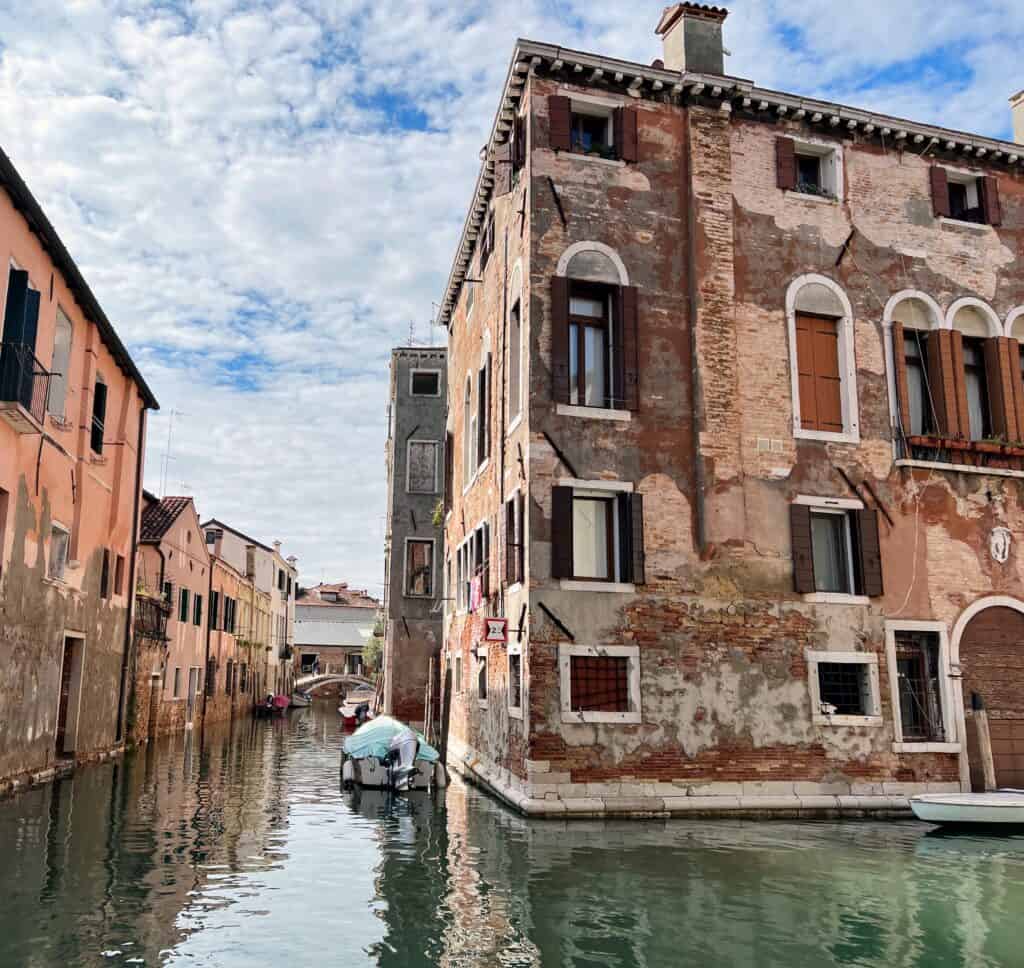
Considering its impact on cities around the world, Venice’s Ghetto Ebraico occupies a surprisingly small area. Jewish community leaders lobbied for a place where they might be allowed to purchase property. Two guarded gates permitted access to the area from dawn to sunset; otherwise residents remained both protected by and imprisoned within high walls. The Jewish Museum of Venice offers tours of the neighborhood, as well as exhibits on the Ghetto’s history and culture.
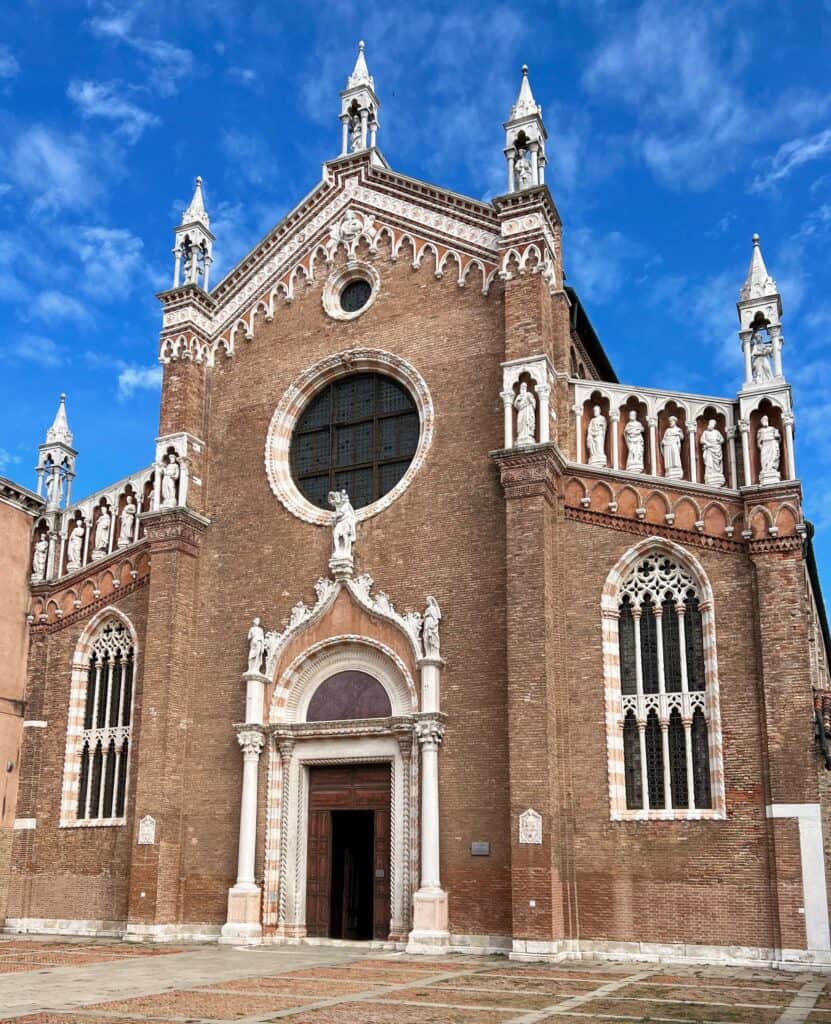
One of Venice’s most beautiful Gothic churches, the Madonna dell’Orto is best known for its links to Tintoretto. The local artist painted some of his most arresting works here, including the monumental altarpieces. Along with the Scuola Grande di San Rocco, this is the best place to see his work. Visitors can pay respects to his tomb: Tintoretto’s family was also buried here, including a daughter who painted.

Among other treasures scattered across Cannaregio, the Ca’ d’Oro is a must. Relatively few tourists take the time to do more than snap a photo of the facade – and they are missing out. The interior matches the opulence of the exterior, and the upper floors house art by the likes of Mantegna, Titian, and Bernini.
For more, see our post Cannaregio, Venice’s Most Relaxing District.
Santa Croce
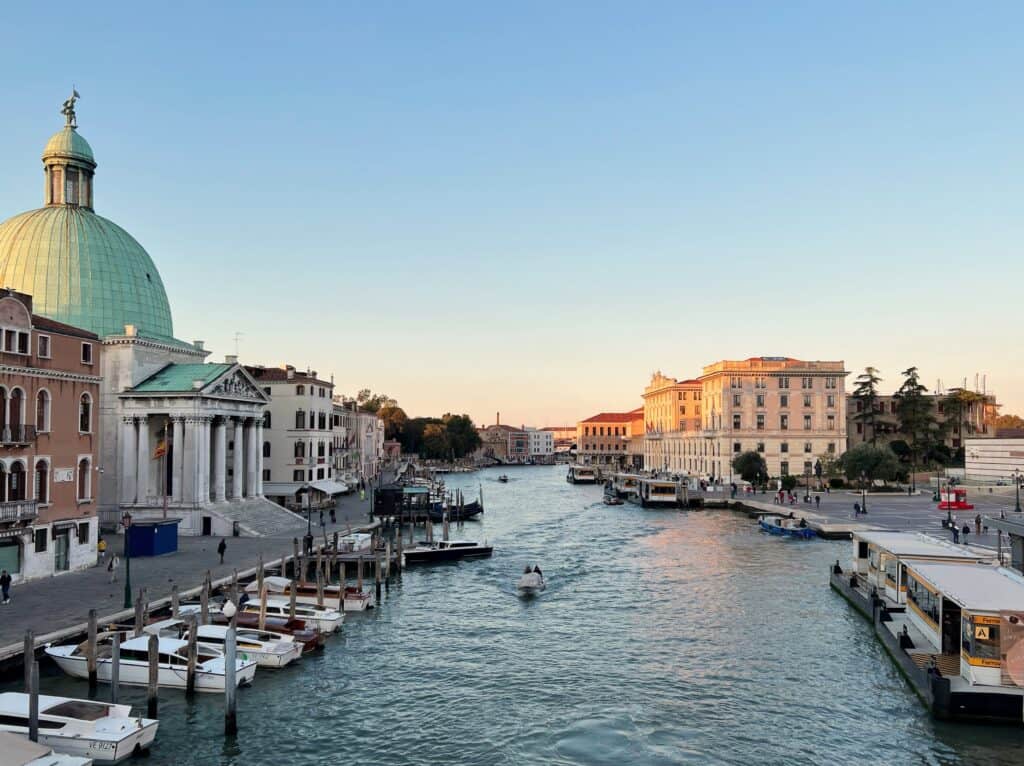
Santa Croce offers a taste of local Venetian life surprisingly close to the major landmarks. The port, parking area, and Piazzale Roma occupy the district’s outer section. Inside the historic city, Santa Croce’s residential area remains quiet, with a good selection of markets as well as restaurants.
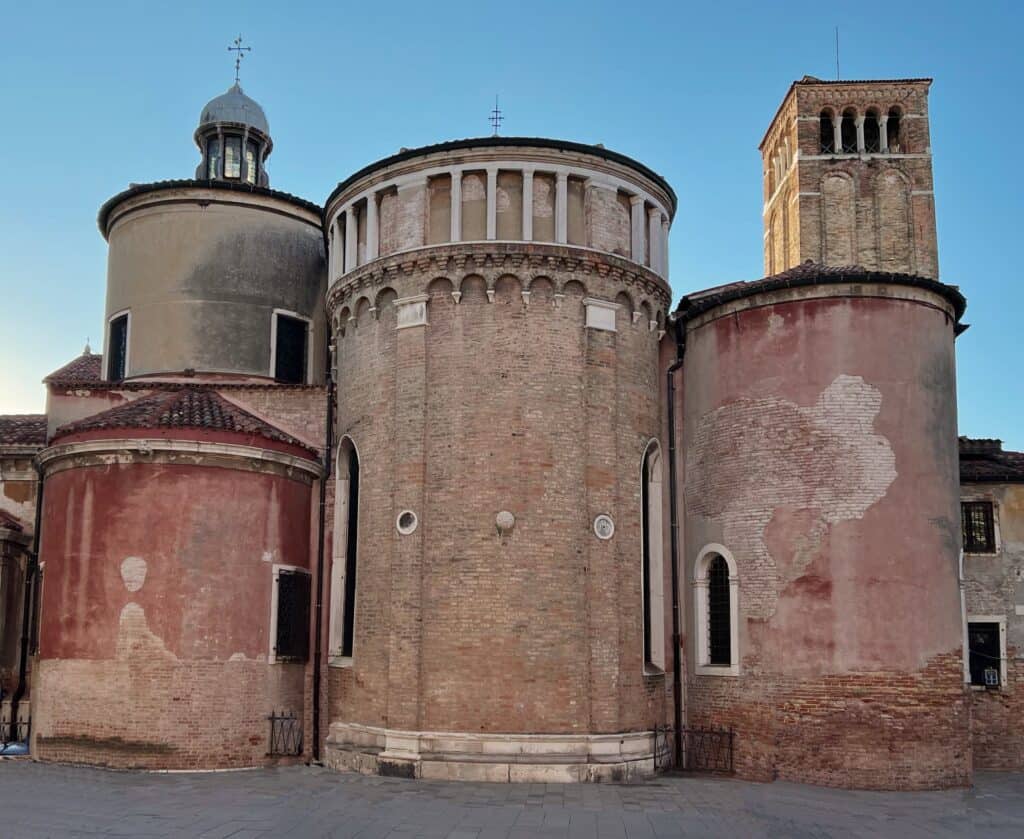
Often described as the heart of the district, Campo San Giacomo functions as a play area and social hub for residents and their canines. It’s dominated by the ninth century San Giacomo dall’Orio, one of the oldest churches in the city.


On the left: approaching the Grand Canal and the Ca’ Pesaro
On the Grand Canal, the Ca’ Pesaro has one of the greatest façades in Venice. Baldassare Longhena, architect of the Santa Maria della Salute, gave a dramatic twist to Renaissance convention by shaving each massive block down to a pointed edge. From a moving boat, the wall of white prisms presents a shifting play of light and shadow.
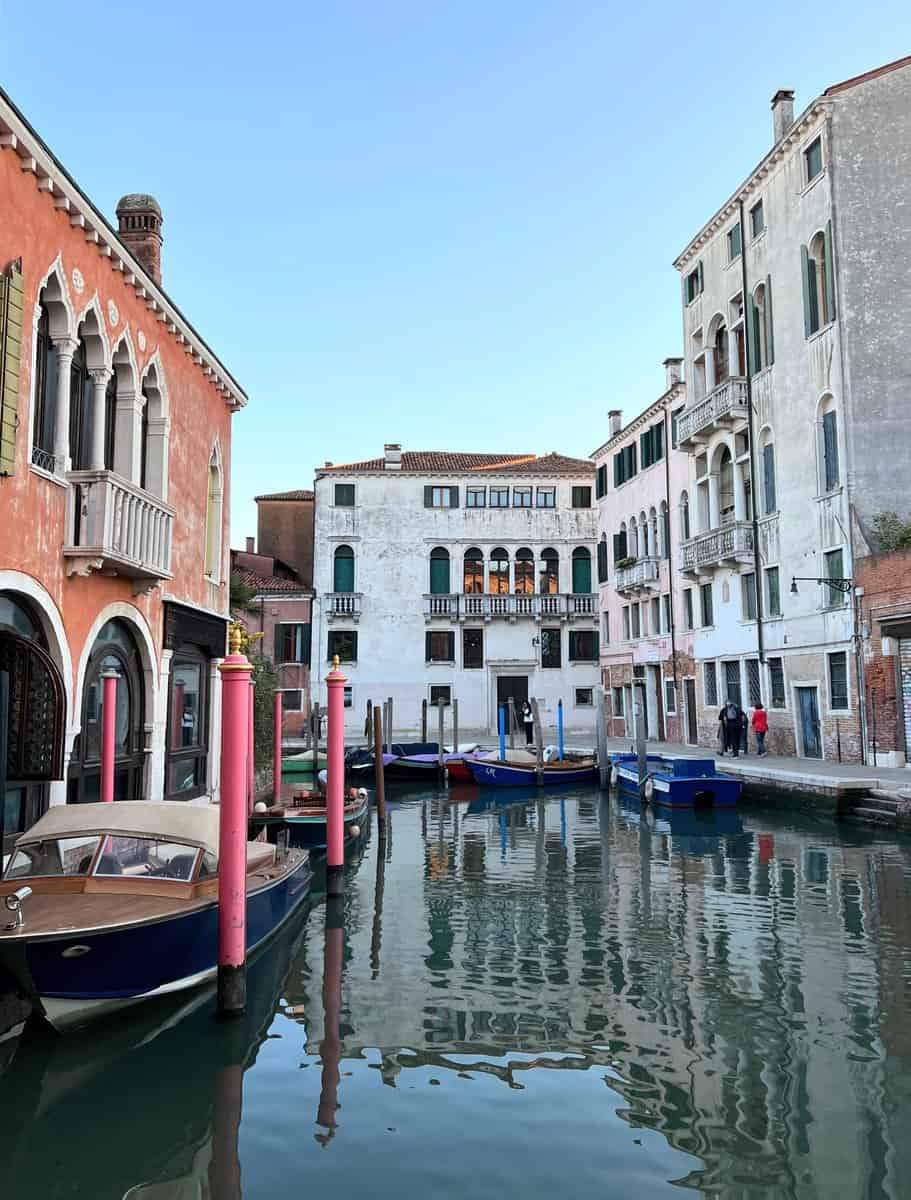
Inside, the palazzo houses two museums. The lower floors hold the International Gallery of Modern Art, with paintings and sculptures from the 19th and 20th centuries. The top floor houses the Museum of Oriental Art, a large collection of Japanese art from the Edo period.
For more, see our post Staying in Santa Croce, Venice’s Most Authentic District.
San Polo

Many visitors treat San Polo as a thoroughfare between the train station and the Rialto; some might detour to the Titians in the Frari or the Tintorettos in the San Rocco, but few drift into the campos and residential pockets. Walking deeper into the district, one can sense tensions evaporating with the traffic level. At the end of the workday, locals pause for an aperitivo and some cicchetti (nibbles) on their way home.


On the right: the entrance to the Chiesa di San Polo
Given that it’s one of the oldest parts of Venice, San Polo still feels down-to-earth. Tucked into the Grand Canal’s big bend, Venice’s smallest sestiere is the only district without any land on the lagoon.

In a city with so much opulence, the unassuming architecture of the Chiesa di San Polo is refreshing. Instead of passing through a grand façade, one enters the church through a side portal. Some parts of the structure go back to the ninth century, including the ship’s-keel roof. Besides paintings by Veronese and Giambattista Tiepolo, the San Polo houses an entire cycle by the latter’s son.


On the left, the Scuola Grande di San Rocco
Middle-class Venetians exercised political power via scuole, charitable organizations which grew into a de facto welfare system. The most powerful of these became known as scuole grandi, and their wealth allowed them to become major artistic patrons during the Renaissance. Founded in 1478, the Scuola Grande di San Rocco features over 50 paintings by Tintoretto, including some of his most visionary work. The smaller Scuola Grande di San Giovanni Evangelista is often overlooked because many of its paintings were moved to other locations – but those that remain can be experienced in a more intimate setting. The Scuola offers 90-minute guided tours as well as concerts, contact the museum to reserve a spot.
For more, see our post Venice’s San Polo District: The Rialto and Beyond.
Dosodoro
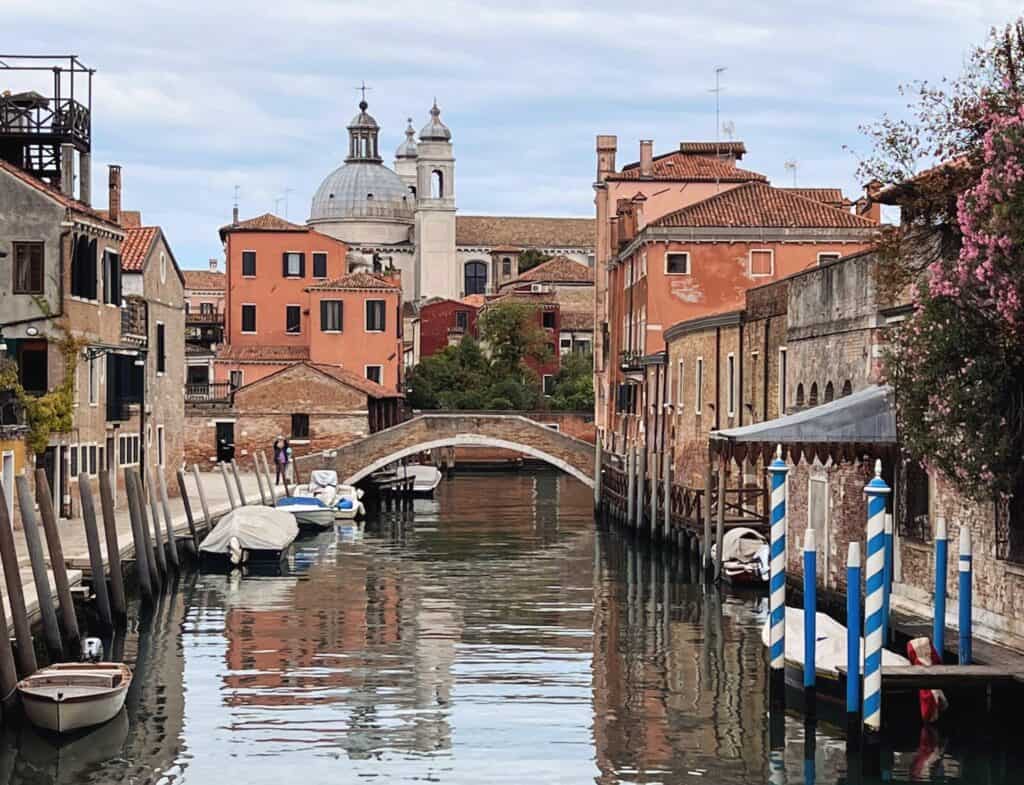
Beyond the crowds clustering around the Accademia Bridge and Peggy Guggenheim Museum, Dosodoro has some of the city’s prettiest residential areas. Although the presence of tourists is on the rise, there are still plenty of peaceful stretches. The southern edge faces the island of Giudecca, and this waterfront – known as the Zattere – is a world apart from its counterpart in San Marco.

Just three of Venice’s workshops for building and repairing gondolas survive today. The oldest and most famous occupies a wooden structure known as the Squero di San Trovaso, adjacent to the campo (square) and church of the same name.


One of our favorite churches is the tiny jewelbox, San Sebastiano. Legend says the painter Veronese found sanctuary here after being charged with murder in Verona in 1555. Apparently he was grateful enough to spend decades painting the walls, ceiling, organ doors, and more. A handful of other masters contributed work to the interior, among them Titian, Tintoretto, and Sansovino.


On the right: a detail from the Ca Rezzonico exterior
Over on the Grand Canal, the Ca Rezzonico houses art and furniture from the 18th century, including lots of Tiepolo. Its cafe sits right on the water – the view alone is worth the price of admission.
San Giorgio Maggiore and Giudecca Islands
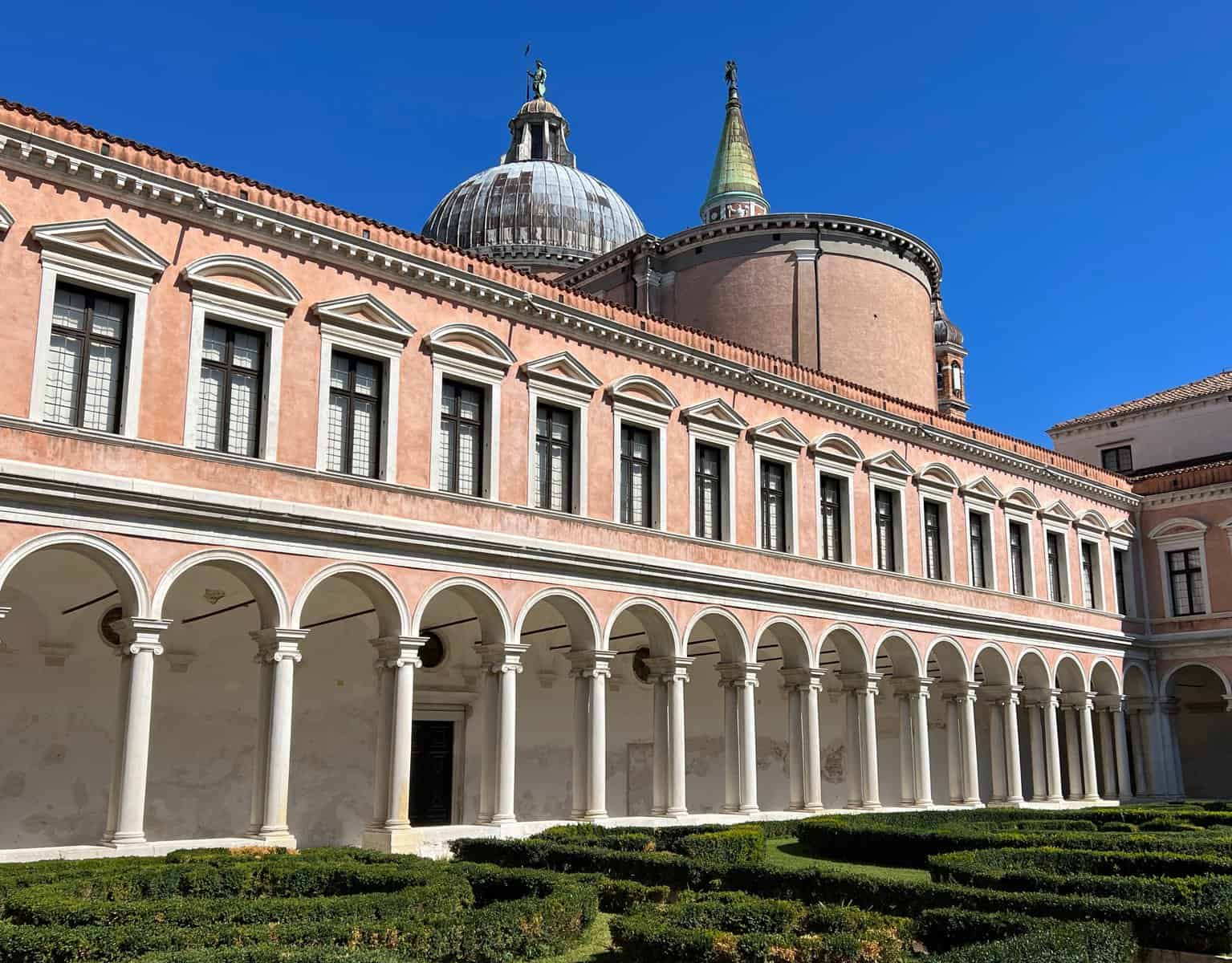
Palladio’s cool, expansive spaces epitomize Venetian serenity – and they remain surprisingly empty even in the high season. In spite of their iconic status, not many people cross the basin to see them up close. On the island of San Giorgio Maggiore, the Giorgio Cini Foundation offers tours of Palladio’s monastery, refectory and cloister, as well as his church. Nearby Le Stanze del Vetro (“The Glass Rooms”) sponsors free long-term exhibitions in two buildings: one next door to the church, and one behind it. For one of the best views of Venice, take the lift to the top of San Giorgio’s bell tower.

On the island of Giudecca, Palladio’s Redentore church has been immortalized in views from afar by painters like Monet and Canaletto. The adjacent gardens were reopened in October 2024 after extensive restorations. Venice still celebrates the Festa del Redentore procession every third Sunday in July, but the church and island stay quiet for the rest of the year.
For more information, see our article on Palladio’s Architecture in Venice.
Isola di San Michele
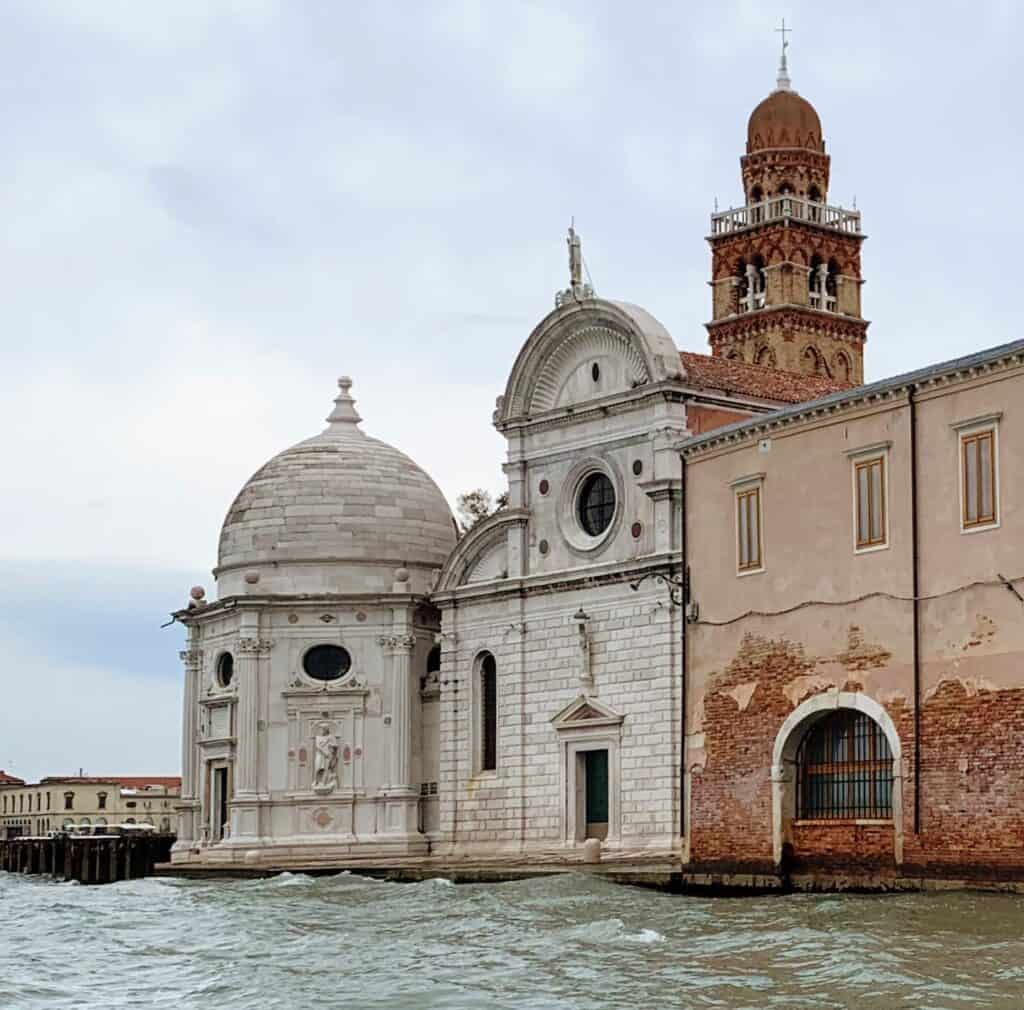
North of Cannaregio, the cemetery island of San Michele makes a peaceful getaway. Visitors can wander among the gardens and funerary monuments, or head straight for the Church of San Michele in Isola. Architect Mauro Codussi created a uniquely Venetian version of the Renaissance style, and his sparkling white façade on the church here would later inspire Palladio’s work.
Further Reading
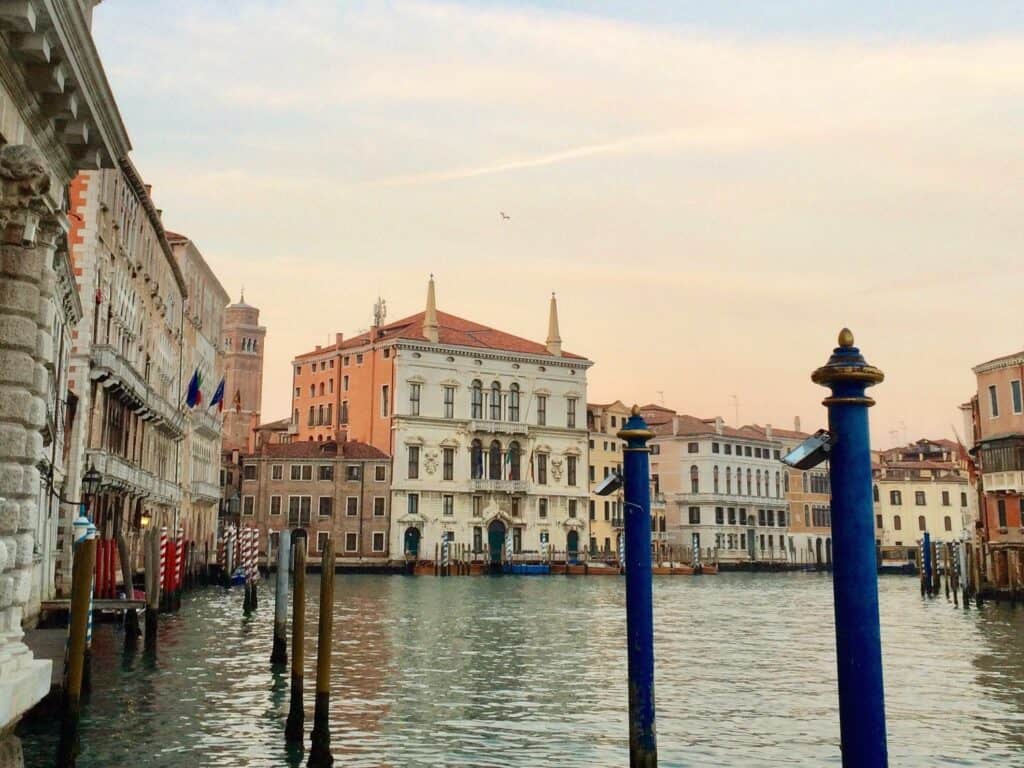
Our other articles on Venice include:

